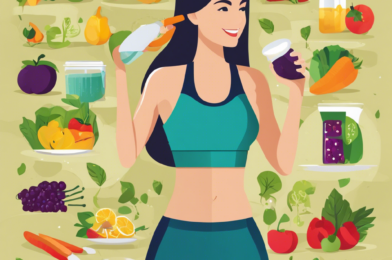With the market saturated with fitness apps, all promising to get you in shape and keep you motivated, it can be a daunting task to find the ones that actually deliver results. Whether you’re looking to shed a few pounds, tone up, or simply incorporate more movement into your daily routine, these apps can help you stay on track and make fitness a fun and enjoyable part of your day.
So, without further ado, let’s dive into our top five picks for the best fitness apps that will help you achieve your health and fitness goals.
1. Nike Training Club
The Nike Training Club app is like having your own personal trainer at your fingertips. It features a vast library of workouts covering a range of intensities and durations, from quick 15-minute sweat sessions to hour-long targeted training programs. The workouts are led by Nike Master Trainers and athletes, ensuring you receive expert guidance and motivation. What sets this app apart is its ability to offer personalized recommendations based on your fitness level and goals, creating a customized fitness plan tailored just for you.
One of the app’s standout features is the variety of workouts it offers, ensuring you never get bored. From HIIT and strength training to yoga and mobility work, there’s something for everyone, and the app caters to all fitness levels, making it perfect for beginners and fitness enthusiasts alike.
2. Strava
Strava is a community-focused app that connects you with a global network of athletes and fitness enthusiasts. It’s ideal for those who enjoy tracking their runs, rides, and other distance-based activities, as it allows you to record and analyze your performance over time.
What makes Strava unique is its social aspect, where you can connect with friends, join clubs, and participate in challenges. This feature adds a layer of motivation, as you can cheer on your peers and strive to beat your personal records. The app also offers a subscription service, providing access to advanced performance analytics and additional training tools to help you fine-tune your workouts.
3. Freeletics
Freeletics is a highly customizable fitness app that serves as your digital coach, offering personalized workout plans adapted to your schedule, preferences, and fitness level. The app features a diverse range of bodyweight exercises that can be done anywhere, anytime, with minimal or no equipment needed.
One of Freeletics’ key strengths is its focus on short, high-intensity workouts, which are ideal for busy individuals who want to get in shape but have limited time. The app also offers a supportive community and personalized coaching tips to help keep you motivated throughout your fitness journey.
4. MyFitnessPal
MyFitnessPal is a powerhouse when it comes to calorie counting and meal tracking. With a database of over 14 million foods, including global cuisine and restaurant items, the app makes it easy to log your meals and keep an eye on your nutrition.
The app’s standout feature is its recipe importer, which allows you to add your favorite recipes from the web or create custom meals, making meal tracking incredibly convenient. MyFitnessPal also syncs with various fitness devices and apps, offering a comprehensive view of your calorie intake and expenditure.
5. Headspace
While not strictly a fitness app, Headspace is a meditation and mindfulness app that can greatly enhance your overall wellness. Including mindfulness in your fitness routine can help reduce pre-workout nerves, enhance focus and motivation, and improve your overall sense of wellbeing.
Headspace offers a range of guided meditations, from short, breath-focused sessions to longer, themed meditations covering various topics like stress relief and improving focus. The app also includes mindful movement and stretch sessions, making it a well-rounded addition to your fitness regimen.
There you have it! Our top five picks for fitness apps that will help you stay motivated, active, and on track with your health and fitness goals. Each app offers something unique, so be sure to give them a try and find the ones that work best for your personal journey towards a healthier you.
Remember, finding an app (or apps!) that you enjoy using and that fits seamlessly into your lifestyle is key to staying motivated and consistent with your fitness routine. Happy sweating!









